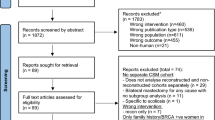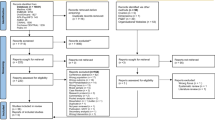Abstract
This article presents evidence regarding aspects of the gendered nature of care women with gynaecological cancer receive from their (usually) male surgeons and oncologists in Australia. We argue that despite women’s general preference for female gynaecologists, those with a gynaecological cancer develop a strong therapeutic relationship with their male medical specialist, not extended to their (usually) female nurses and other allied health professionals. Given the highly sensitive and sexualized nature of gynaecological cancer, this requires explanation. These findings can be partly explained by examining the division of labour between nurses and doctors, specifically issues of control over this process and the development of specializations. The findings also bring into stark relief the way in which power and status differences can be used by medicine to create a positive therapeutic relationship with patients while simultaneously de-eroticizing the intimate procedures necessary in assisting women throughout their cancer treatment. Importantly, this relationship also has relevance for policy makers, particularly those concerned with the highly gendered division of labour of the medical specialty workforce in Australia.
Similar content being viewed by others
Notes
The AUSE106 socioeconomic index for Australia classifies Medicine as the most prestigious occupational group at 100 and nursing at 80.1.
Only cervical cancer is linked to the papilloma virus. In Australia public health strategies tend towards down playing the link to sexually transmitted infection and the need for behavioural change, and focus instead on immunization which is free to all young women and girls and boys 12–13 year olds (NSW Cancer Council 2012). According to Braun and Gavery (1999) this is done as a strategy to avoid possible stigmatizing of women with cervical cancer, and the potential negative impact on engagement in screening.
References
Ackerman-Ross S, Sochat N (1980) Close encounters of the medical kind: attitudes towards male and female physicians. Soc Sci Med 14A:61–64
Australian Institute of Health and Welfare [AIHW] (2010) Gynaecological cancer projections 2010–2015. April. Cat.no.CAN 49. Canberra
Australian Institute of Health and Welfare [AIHW] 2012) Gynaecological cancers in Australia: an overview. AIHW, Canberra
Blackman I, Henderson J, Willis E, Toffoli L (2015) After hours nurse staffing, work intensity and quality of care-missed care study: New South Wales, Final report to the Australian Nursing and Midwifery Federation New South Wales. http://phamilton9.wix.com/insrnc#!recent-report/cqeg
Blomberg K, Forss A, Ternestidt B, Tishelman C (2009) From ‘silent’ to ‘heard’: professional mediation, manipulation and women’s experience of their body after an abnormal Pap smear. Soc Sci Med 688:479–486
Bolton S (2005) Women’s work, dirty work: the gynaecological nurse as ‘Other’. Gend Work Organ 12(2):169–186
Booth K, Beaver K, Kitchener H, O’Neill J, Farrell C (2004) Women’s experiences of information, psychological distress and worry after treatment for gynaecological cancer. Patient Educ Couns 56:225–232
Braun V, Gavery V (1999) With the best of reasons: cervical cancer prevention policy and the suppression of sexual risk factor information. Soc Sci Med 48:1463–1474
Cancer Australia and the Royal Australian College of Obstetricians and Gynaecologists (CA & RACOG) (2011) National gynaecological cancers service delivery and resource framework. Cancer Australia, Canberra
Chur-Hansen A (2001) Preferences for female and male nurses: the role of age, gender and previous experience–year 2000 compared with 1984. J Adv Nurs 37(2):192–198
Cioffi J (2004) Caring for Women from culturally diverse backgrounds: midwives’ experiences. J Midwifery Women’s Health 49(5), http://www.medscape.com/viewarticle/489507. Cited 15 Jan 2013
Fisher W, Bryan A, Dervaitis K, Silcoz J, Kohn H (2002) It ain’t necessarily so: most women do not strongly prefer female obstetrician-gynecologists. J Gynaecol Cancer 11:885–888
Galasinski D, Ziolkowska J (2007) Gender and the gynecological examination: women’s identities in doctor’s narratives. Qual Health Res 17(4):477–488
Gray J (1982) The effect of the doctor’s sex on the doctor–patient relationship. Women’s Health 32:167–169
Guiffre P, Williams C (2010) Not just bodies: strategies for desexualising the physical examination of patients. Gend Soc 14(3):457–482
Health Engine (2011) Female gynaecologist oncologists in australia. http://healthengine.com.au/search_interest.php?q=Gynaecological+Oncology&l=&suburb=&gender=F&language=&km=. Cited 13 Jan 2012
Health Workforce Australia (2012) Medical specialties, vol 3. HWA, Adelaide
Henslin J, Biggs M (1971) Dramaturgical desexulization the sociology of the vaginal examination. In: Henslin J, Sagarin E (eds) The sociology of sex: and introductory reader. Schocken Books, New York
Johnson A, Schnatz P, Kelsey A, Ohannessian C (2005) Do women prefer care from female or male obstetrician-gynecologists? A study of patient gender preference. JAOA 105(8):369–379
Kerssens J, Bensign J, Andela M (1997) Patient preference for genders of health professionals. Soc Sci Med 44:1531–1540
King D, Martin W, Dwyer J, Healy J, Owada K, Smith L, Sun L, Van Deth A, Wainer J, Willis E (2008) Review of the gynacological cancers workforce. Report to Cancer Australia, National Institute of Labour Studies, Adelaide
Kirk M, Hoban E, Dunne A, Manderson L (1999) Barriers to and appropriate delivery systems for cervical cancer screening in Indigenous communities in Queensland: final report. Australian Centre for International & Tropical Health & Nutrition, Herston
Latimer J (2000) The conduct of care. Blackwell Sciences, Ltd, UK
Lawler J (2006) Behind the screens, nursing, somology and the problem of the body. Sydney University Press, Australia
Lodge N, Mallett J, Blake P, Frayatt I (1997) A study to ascertain gynaecological patients’ perceived levels of embarrassment with physical and psychological care given by female and male nurses. J Adv Nurs 25:893–907
Lund J, Roher J, Goldfarb S (2005) Patient gender preferences in a large military teaching hospital. Obstet Gynaecol 105:747–750
Lupton D (1997) Doctors on the medical profession. Sociol Health Illn 19(4):480–497
Manderson L (2004) Boundary breaches: the body, sex and sexuality after stoma surgery. Soc Sci Med 61:405–415
Maughan K, Clarke C (2001) The effect of a clinical nurse specialists on quality of life and sexuality. J Clin Nurs 10:221–229
McMillan J, Beavis A, Jones F (2009) The AUSE106: a new socioeconomic index for Australia. J Sociol 45(2):123–149
New South Wales Cancer Council (2012) Cervical cancer and HPV vaccine fact sheet. http://www.cancercouncil.com.au/editorial.asp?pageid=253#3 Cited 7 Jan 2012
Nichols S (1987) Women’s preferences for sex of doctor: a postal survey. J R Coll Gen Pract 37:540–543
Ong I, Visser M, Lammes F, de Haes J (2000) Doctor–patient communication and cancer patients’ quality of life and satisfaction. Patient Educ Couns 41:145–156
Pringle R (1998) Sex and medicine: gender, power and authority in the medicine profession. Cambridge University Press, Cambridge
Reath J, Usherwood T (1998) Improving cervical screening in a remote aboriginal community. Aust N Z J Public Health 22(6):659–663
Royal Australian and New Zealand College of Obstetricians and Gynaecologists (2014) Activities report. www.ranzcog.edu.au Cited 5 April 2015
Stumpers S, Thomson N (2009) Review of cancer among Indigenous peoples. http://www.healthinfonet.ecu.edu.au/chronic-conditions/cancer/reviews/our-review Cited 6 Feb 2012
Vick S, Scott A (1998) Agency and health care. Examining patients’ preferences for attributes of the doctor–patient relationship. J Health Econ 17:587–605
Wainer J (2004) Work of female rural doctors. Aust J Rural Health 12(2):49–53
Williams P (1999) Changing the palace guard: analyzing the impact of women’s entry into medicine. Gend Work Organ 6(2):106–121
Willis E (1983) Medical dominance: the division of labour in Australian health care. Allen and Unwin, Sydney
Willis E (2006) Introduction: taking stock of medical dominance in medicine medical dominance revisited. Health Sociol Rev Spec Issue 15(5):421–431
Willis E (2010) Accelerating control: an ethnographic account of micro economic reform on the work of health professional in Australia. LAP, Germany
Wray N, Markovic M, Manderson L (2007) Discourses of normality and difference: responses to diagnosis and treatment of gynaecological cancer of Australian women. Soc Sci Med 64:2260–2271
Acknowledgments
The research was funded by Cancer Australia.
Author information
Authors and Affiliations
Corresponding author
Rights and permissions
About this article
Cite this article
Willis, E., King, D., Dwyer, J. et al. Women and Gynaecological Cancer: Gender and the Doctor–Patient Relationship. Topoi 36, 509–519 (2017). https://doi.org/10.1007/s11245-015-9349-9
Published:
Issue Date:
DOI: https://doi.org/10.1007/s11245-015-9349-9




